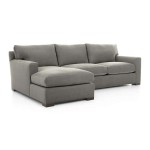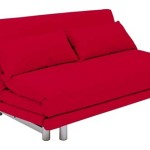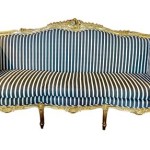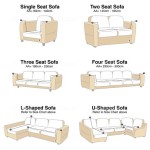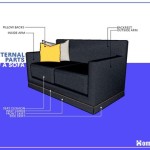What Makes a Comfortable Sofa
A sofa is a central piece of furniture in most living rooms, serving as a place to relax, socialize, and unwind. Its comfort is paramount, influencing how much time you spend on it and impacting your overall enjoyment of the space. Choosing a comfortable sofa requires understanding the elements that contribute to a pleasant seating experience. This article will delve into the key factors that make a sofa comfortable and discuss how to consider them when making a purchase.
Cushioning and Support
The foundation of a comfortable sofa lies in its cushioning and support. The type of cushions used significantly impacts the feeling of the sofa.
Seat Cushions:
- Foam Cushions: These are widely used and offer a variety of densities, from firm to soft. High-density foam provides more support and tends to retain its shape, while lower-density foam conforms more readily to the body, offering a softer feel.
- Feather Cushions: These cushions are known for their plushness and ability to mold to the body. However, they may require fluffing and can flatten over time.
- Down Cushions: Similar to feather cushions, down offers a luxurious feel and excellent conforming ability. However, down is often more expensive and can lose its volume if not properly cared for.
- Fiber Cushions: These cushions mimic the feel of feathers or down but are less expensive and easier to maintain. They often provide a good balance of comfort and support.
Back Cushions: Similar to seat cushions, back cushions can be filled with various materials. Firm back cushions provide better support for lumbar areas, while softer cushions offer a more relaxing feel. Consider the firmness you desire and how it complements the seat cushions.
Support and Frame: The sofa frame should be sturdy and provide solid support for the cushioning. Wood frames are often preferred for their durability, while metal frames offer a modern aesthetic. Look for a sofa with a well-constructed frame, ensuring the sofa's longevity and stability.
Dimensions and Ergonomics
The dimensions and ergonomics of a sofa play a crucial role in its comfort.
Seat Depth: The depth should allow for proper leg and back support. Too deep, and you may feel like you are sinking in; too shallow, and your legs may not be fully supported. A good rule of thumb is to choose a seat depth that is slightly longer than your thighs.
Seat Height: The seat height should be comfortable for getting on and off the sofa, and it should provide proper support for your legs and feet. A comfortable seat height is typically around 18 to 20 inches.
Armrest Height: Armrests should be positioned at a height conducive to resting your arms comfortably. They should not be too high or too low, and they should offer adequate support for your elbows and forearms.
Backrest Angle: The backrest angle should be comfortable for sitting upright or leaning back. A slight recline can enhance comfort and relaxation, while a steeper angle offers better support for working or reading.
Lumbar Support: Lumbar support is essential for maintaining proper posture and preventing back pain. Look for a sofa with a contoured back that provides support for the lower back.
Fabric and Material
The fabric and material of a sofa contribute to its comfort and aesthetic appeal.
Fabric Texture: The texture of the fabric can significantly impact the feel of the sofa. Smooth fabrics like velvet or linen are luxurious and inviting, while textured fabrics like corduroy or boucle offer a more tactile experience.
Fabric Durability: Consider how much wear and tear the sofa will experience and choose a fabric that can withstand it. Durable fabrics like microfiber or leather are more resistant to stains and fading.
Fabric Comfort: The comfort of the fabric depends on its texture, weave, and composition. Soft and breathable fabrics are generally more comfortable for long periods of sitting.
Material: The material of the sofa's frame, cushions, and legs can also impact its comfort. Wood frames are often preferred for their durability and natural beauty, while metal frames offer a modern and stylish look. Upholstery materials should be chosen based on your preferences for comfort, aesthetic, and durability.
Overall Design: The overall design of the sofa should complement the style of your living room and provide a comfortable and inviting atmosphere. Consider the shape, size, and features of the sofa to ensure it fits seamlessly into your space and fulfills your needs.
By carefully considering the factors outlined above, you can choose a sofa that will provide years of comfort and enjoyment. Remember to prioritize your individual preferences and needs when selecting a sofa, ensuring it meets your specific requirements for comfort, style, and durability.

Expert Advice On Making Your Couch Comfortable Foam

Sofa Guide For 2024 Reviews By Wirecutter

The 20 Most Comfortable Sofas Of 2024 Purewow

Comfort In The Making

How To Make A Sofa Bed More Comfortable 10 Tips And Tricks Home Daily

5 Tips To Find The Most Comfortable Couch Or Sectional

9 Best Couches For Posture And Back Health

15 Most Comfortable Couches Sofas Of 2024

15 Most Comfortable Couches Sofas Of 2024

What Makes A Sofa Comfortable Blog

